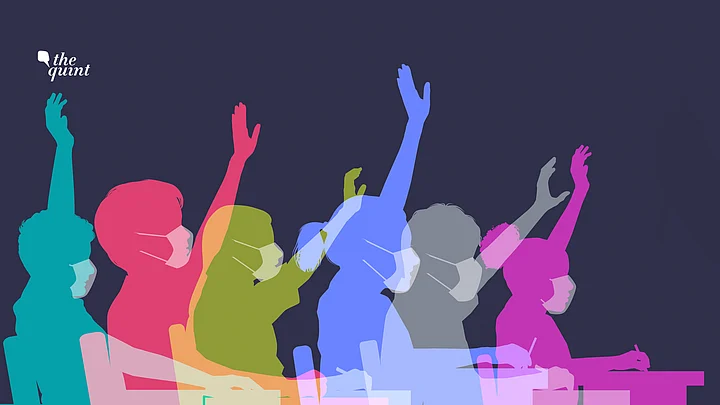When around 829 teachers and 575 students in the age group of 15-16 tested positive for the novel coronavirus in Andhra Pradesh, just a week after schools in the state were thrown open on 2 November, many were left in shock and disbelief.
After all, the sensitive subject of reopening schools has led to a massive debate between those who felt that the move would put the young at risk and the others who argued that not reopening would send millions out of the education system permanently.
But while all aspects of this debate are relevant, there’s one question that has continued to baffle many others – Why Andhra Pradesh?
Why have states like Uttar Pradesh and Haryana, that reopened schools way ahead of Andhra Pradesh in late October, recorded fewer outbreaks of COVID-19 in schools?
We dig deep into the numbers to find out.
Are children getting the virus at school?
Professor GVS Murthy, the Director of Indian Institute of Public Health, Hyderabad, says that according to a study conducted by UNICEF across 191 countries in the world, most children who contract the coronavirus do not get infected while at school.
But, does this mean that students are getting the virus from their parents or the community they interact with?
“According to the study, there’s been hardly any transmission which has occurred in schools. The most likely transmission that may be occurring is the mode of transportation to school, rather than the school itself.”Professor GVS Murthy, Director, IIPH, Hyderabad
Which children are more likely to get COVID-19?
While data suggests that only 8.5 percent of those infected with COVID-19 globally are below 18, children below the age of 10 are less susceptible to the disease in schools as compared to those above 10.
While children below 10 are less likely to transmit the disease because of stronger adherence to social distancing in schools, adolescents are more likely to transmit the virus as their chances of catching the coronavirus is as good as young adults, who are more mobile and often do not wear masks.
Interestingly, schools in Andhra Pradesh were only opened for Classes 9 and 10. They are children in the age group of 15 to 16, who are as vulnerable to COVID-19 as young adults.
Neverthess, Professor Murthy maintains that students in Classes 9 and 10 would have only got the virus at school if social distancing measures were not strictly followed.
But why is Andhra reporting more numbers than UP, Haryana?
Haryana, where government schools opened for Classes 9 to 12 early this month, had recorded only 30 percent attendance on 12 November.
In Uttar Pradesh, which reopened schools for Classes 9 to 12, attendance in government schools has reached 50 percent, says Deputy Chief Minister Dr Dinesh Sharma, who is also the state’s Secondary Education and Higher Education minister.
So, why did Andhra Pradesh, which reopened classes only for Classes 9 and 10 from 2 November, and subsequently recorded close to 50 percent attendance, report so many cases?
The answer is simple – testing.
“It’s more about how many are getting tested and not just about how many are attending. In UP and Haryana, there’s hardly any testing being done in schools, outside schools or before students go to school. That makes all the difference.”Professor GVS Murthy, Director, IIPH, Hyderabad
Since the COVID-19 disease can remain asymptomatic or pre symptomatic, the only way to know the number of people infected with the virus is to test.
In Andhra Pradesh, 70,790 teachers and 95,763 students, all from government schools, were screened for COVID-19, out of which 829 teachers and 575 students tested positive.
Are UP and Haryana testing school students and teachers?
In Haryana, three students of a government school in Narwana of Jind district tested positive on 6 November, after only 60 of the school’s 200 children were screened for COVID-19 as a precautionary measure, reports The Times of India.
Speaking to The Quint, an officer from Haryana’s education ministry said that, “Teachers were screened for COVID-19 when schools had opened for consultation in mid September.” The official added that presently, there is no guideline on random screening of teachers and students in the state.
In the period between 2 to 9 November, Haryana conducted a total of 1,53,221 tests for its entire population.
When asked about the reason why too many students or teachers did not test positive in Haryana, the official cited “large concentration of students in sparsely rural areas, short commute to school on cycles or personal vehicles and strict adherence to covid protocol” as potential reasons.
However, there’s no way to tell if adherence to COVID norms have kept the numbers low when students and teachers are not screened randomly.
How many cases did UP record?
Speaking to The Quint, Dr Dinesh Sharma said that so far, no instance of students or teachers testing positive have been reported in Uttar Pradesh.
Dr Sharma also said that it was the state’s strict adherence to COVID-19 protocols that have resulted in no student or teacher testing positive. However, since there is no established protocol for screening students or teachers, there is no way to find out if this claim is reflected on the ground level.
Dr Sushil Gupta, Vice President of Prelude Public School in Agra said that although private schools in the state have opened, attendance is really down to 10-15 percent and hence, students are not testing positive.
When asked if there was any protocol for random testing in schools, Dr Gupta said that students and teachers are only tested when they show symptoms.
(At The Quint, we question everything. Play an active role in shaping our journalism by becoming a member today.)
